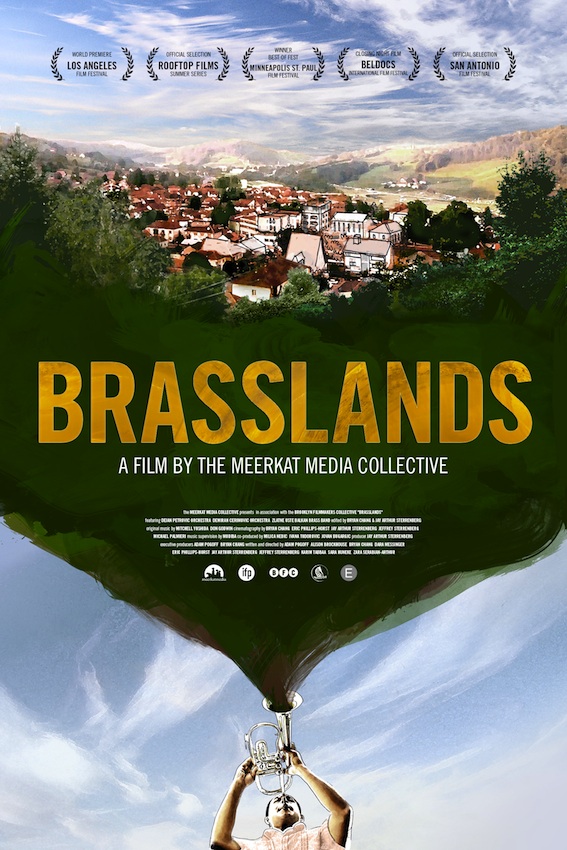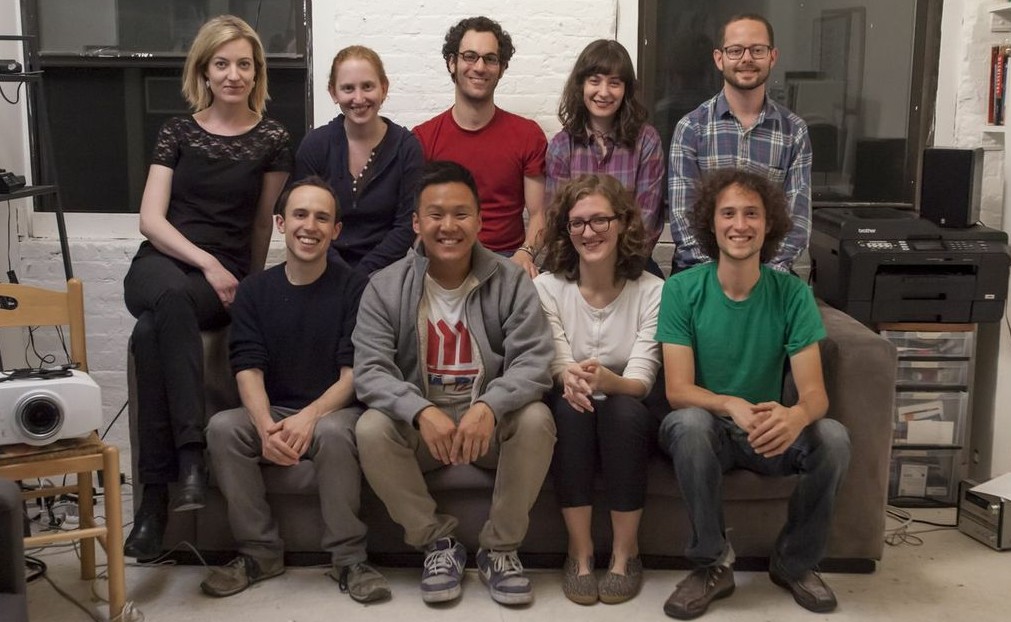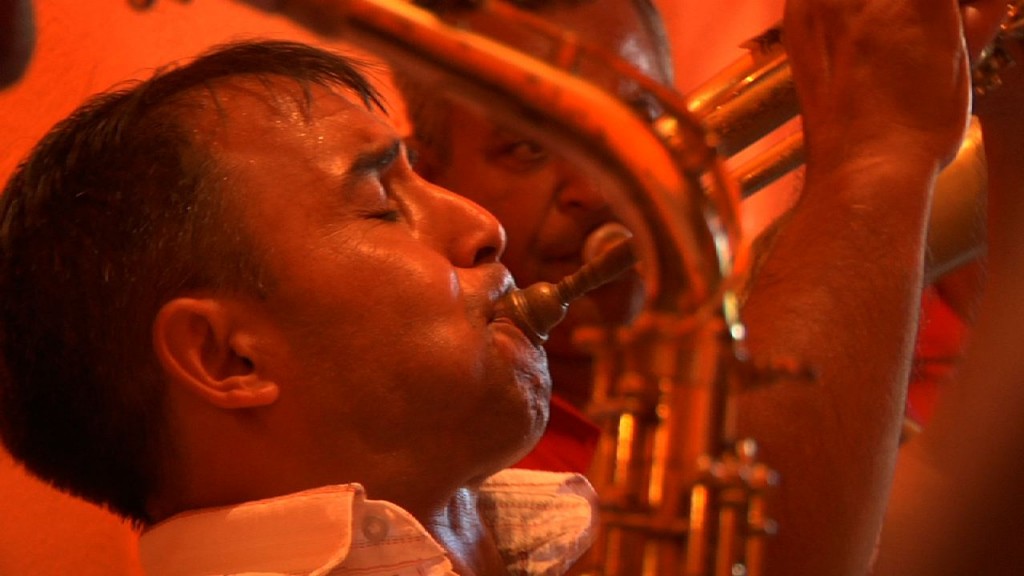Americans Battle It Out With Balkan Brass Heroes in Guča
 A band of perky Americans with a love for everything Balkan took on the might of brass giants when they made a pilgrimage to the tiny south Serbian town of Guča to compete in the annual music festival. Thankfully, they took a US film crew along to record this meeting of minds over a shared love of trumpets and drums. The resulting documentary, Brasslands, follows Zlatne Uste, America’s foremost Balkan brass band, as they prepare to compete in the 50th anniversary of the world’s largest trumpet competition.
A band of perky Americans with a love for everything Balkan took on the might of brass giants when they made a pilgrimage to the tiny south Serbian town of Guča to compete in the annual music festival. Thankfully, they took a US film crew along to record this meeting of minds over a shared love of trumpets and drums. The resulting documentary, Brasslands, follows Zlatne Uste, America’s foremost Balkan brass band, as they prepare to compete in the 50th anniversary of the world’s largest trumpet competition.
Brasslands follows this 12-piece band of enthusiastic American-born musicians from New York, as they travel to Serbia to be the first Americans to compete at the renowned Guča festival. For one week of every year, this otherwise insignificant Serbian town explodes with the riotous sounds of half a million brass music fans as bands compete in the world’s biggest trumpet contest.
Two American Premieres For Serbian Music Movie
The film, which premieres with free screenings in Los Angeles (15 June) and New York (13 July), presents the band as part of a rather bohemian group of Balkanophiles who meet annually at ‘Balkan Camp’, in Rock Hill, New York. At this very American retreat, people gather to enjoy Serbian dance, music and food. Cue scenes of self-proclaimed ‘lefties’ learning the kola, weaving and proclaiming their love for Balkan culture while others receive a briefing on the sad plight of the Roma people.
“I was hooked on Balkan brass music ever since I first heard it, back in high school,’ said Adam Pogoff, one of a team of producers behind the film. “I moved to New York City after college so that I could access a wide array of live Balkan music. I even began taking Balkan folk dance lessons, led by one of Brasslands’ main characters (Michael Ginsburg), and it was during that time when I first heard of the Guča festival.”
Adam explained how this sparked his inspiration for the film. “It was going to be the 50th anniversary and I decided to go there to document the event,’ he said. “Shortly after, I learned my dance teacher and his Balkan brass band, Zlatne Uste, was traveling to Guča to compete in the first ever international competition. With that, I realised I had my main American characters and the project was on.”
Interestingly, not one of the members of Zlatne Uste has any Balkan heritage, which is amusingly highlighted in a scene from a previous appearance on stage in Serbia, as the compere tells the thousands-strong crowd how Zlatne Uste meant to call themselves ‘Golden Lips’ but, as none of them is a native Serbian speaker, they actually branded themselves ‘Golden Mouth’. It is a subtle difference, to be fair.
But despite their lack of Serbian or even Slavic roots, they have guested at the Dragachevo Brass Festival in Guča four times and, each year, they bring a taste of the Balkans to the streets of New York, by hosting the Golden Festival, with around 40 Balkan bands taking part.
Brasslands Balkan Brass Soundtrack on Evergreene Music
Once the cultural scene-setting is complete, the band packs its bags and heads to Serbia and the music can (mostly) take centre stage, providing the film with a vibrant readymade Brasslands soundtrack (available from world music label Evergreene Music. The soundtrack includes live performances from the film’s main Serbian and Roma characters, Dejan Petrovic and Demiran Cerimovic, as well as studio recordings from four of New York’s best Balkan brass bands – Zlatne Uste, Slavic Soul Party!, Veveritse Brass Band, and the Raya Brass Band.
As the festival commences, the excitement in the small town of just over two thousand people quickly grows to a deafening level of trumpets and drums. Despite the inevitable problems of filming in such chaotic circumstances, as revellers fill every street day and night, the team had the time of their lives in Guča, said Adam: “The music was incredible! I mean, you had the best brass bands in the world surrounding you all the time, from morning to night. You might be able to hear ten brass bands at once because of the sheer number of musicians. The crowds were huge and sometimes that made it very difficult to film and follow our characters, but it was a huge amount of fun to be at the centre of such an occasion.”
Of course, in amongst the heaving crowds and the musicians there is a small group of wide-eyed Americans about to step back on to the stage that some of them first took to some years ago. For them, this seems like coming home. As one of the band puts it: “we were playing in the midst of giants”.
Serbian Music Stars Triumph at Guča
One musician to feature heavily in the documentary is Serbian trumpet player Dejan Petrovic who was returning to defend his Guča championship title. Hailing from Užice, Dejan Petrović is the son of acclaimed brass musician Milovan “Mića“ Petrović, and is the fourth generation of brass musicians from this family. In 2006, he became the youngest musician to be named ‘Master of the Trumpet’ at Guča.
For Adam, it was a no-brainer to include Dejan in the film, especially as they had so little time on the ground in Serbia. “We did a lot of research in the US,’ said Adam. “We met with ethnomusicologists, scholars, filmmakers and people in the Serbian-American community, who were all very helpful. We made a number of vital contacts in Serbia with whom we spoke regularly leading up to our departure. But apart from that… Traveling to Serbia multiple times was beyond our budget.”
New York’s Meerkat Media Collective
Brasslands is a product of the Meerkat Media Collective, a group of like-minded New York filmmakers who prefer to work without the usual hierarchy of a film production. For them, this allows for greater creative flow and interaction between all the players, rather than only those at the top of the tree. “Brasslands was made using a very unique structure, where ten of us act as co-directors,’ Adam explained. “We poured over the 300 hours of footage and wrote the story together. There are three producers, two lead editors, and five cinematographers. It is a pretty huge core team for a documentary, especially one that had been in more or less full-time production for over four years.”
Now all ten of them can draw a breath. After many miles of travel and endless days and nights, the finished product is ready to be presented to audiences. “We are incredibly excited to have our world premiere at the Los Angeles Film Festival on 15 June,’ said Adam. “For both the Los Angeles and New York premieres we have organised Balkan brass festivals with multiple bands playing simultaneously to replicate the sound and feel of Guča. This will be a unique experience for an American audience, especially with as many as four bands playing all around them.”
After that excitement of the world premiere dies down, the plan is to take the film on the festival circuit in the coming year. “We don’t have any official announcements just yet but we are very interested in screening the film to audiences in the UK and, of course, it would be exciting to see the reaction of audiences in Serbia. I hope that they will like what they see (and hear)!”
NATO Bombing, Nationalism & Serbian Flags
While the music should be seen as the king of Brasslands, this film is not a feelgood film about a band of New Yorkers following their dreams of competing against some of the best Balkan brass musicians on their own turf. The filmmakers have also gone to great efforts to represent the Roma people and they do not shirk at showing the grittier side of life alongside entertaining footage of bands of gypsies. One musician featured in the film, gypsy trumpeter Demiran Ćerimović, experiences hardship as he plays to make money for his family.
 There is an occasional mention of the NATO bombing of Serbia and voiceover on how nationalism is never far below the surface in Serbia (of course, accompanied by familiar scenes of flags and flares), the film largely manages to steer a fine line between comment and content. Others might disagree.
There is an occasional mention of the NATO bombing of Serbia and voiceover on how nationalism is never far below the surface in Serbia (of course, accompanied by familiar scenes of flags and flares), the film largely manages to steer a fine line between comment and content. Others might disagree.
If there is one take-out from Brasslands, it should that, despite whatever else is thrown at people during their daily grind, people can come together in a celebration of identity and belonging that is embodied by their shared joy of music and community. That has to be something worth singing about.

